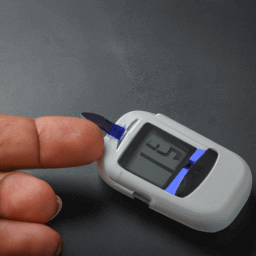Which finger to use for Pulse Oximeter
The pulse oximeter is a medical device used to measure the oxygen saturation level in the blood. It is a non-invasive tool that is easy to use. The finger is the most commonly used site for pulse oximetry. The best finger to use for pulse oximetry is the index finger. This is because it has a good blood supply and is easily accessible. The middle finger can also be used, but it may not give accurate readings if the blood supply is poor. The thumb and little finger are not recommended for pulse oximetry as they have poor blood supply and may give inaccurate readings. It is important to keep the finger still and avoid any movement during the measurement to get accurate results.
Which Finger to Use for Pulse Oximeter?
Pulse oximeters are becoming increasingly popular these days, especially with the ongoing COVID-19 pandemic. These devices measure the oxygen saturation levels in your blood and are used to monitor your health. However, many people are confused about which finger to use for pulse oximeter readings. In this article, we will discuss the best finger to use for pulse oximeter readings and why.
The Middle Finger
According to medical experts, the best finger to use for pulse oximeter readings is the middle finger. This is because the middle finger has the most consistent blood flow and is less likely to have any deformities or abnormalities that could affect the accuracy of the reading. Additionally, the middle finger is less likely to have any nail polish or artificial nails that could interfere with the reading.
Other Fingers
While the middle finger is the best finger to use for pulse oximeter readings, other fingers can also be used. The index finger, ring finger, and little finger can also provide accurate readings. However, the thumb should be avoided as it has a different blood flow pattern and can give inaccurate readings.
Tips for Accurate Readings
When using a pulse oximeter, there are a few tips you can follow to ensure accurate readings:
- Make sure your hands are warm and dry before taking a reading.
- Avoid using a finger that has a lot of calluses or scars.
- Remove any nail polish or artificial nails before taking a reading.
- Make sure the pulse oximeter is properly calibrated and positioned on your finger.
Conclusion
In conclusion, the middle finger is the best finger to use for pulse oximeter readings. However, other fingers can also provide accurate readings. By following the tips mentioned above, you can ensure accurate readings and monitor your health effectively.
| Best Finger | Other Fingers | Tips for Accurate Readings |
|---|---|---|
| Middle finger | Index finger, ring finger, little finger | Make sure your hands are warm and dry before taking a reading. Avoid using a finger that has a lot of calluses or scars. Remove any nail polish or artificial nails before taking a reading. Make sure the pulse oximeter is properly calibrated and positioned on your finger. |
| By www.zelect.in | ||
Sharing is caring!
Facebook Twitter Email
Recommended articles for Pulse Oximeter
Pulse Oximeter types and buying guide
-
Pulse oximeter buying guide. How to choose the right oximeter
-
What is a Pulse Oximeter
-
What are the Pulse Oximeter types. Which one is best?
-
What is the normal oxygen saturation on Pulse Oximeter
-
Which brand is best for Pulse Oximeter India
-
Does a Pulse Oximeter measure blood pressure
-
Does a Pulse Oximeter measure heart rate
-
Does Apple watch have Pulse Oximeter
-
How accurate is a Pulse Oximeter
-
What are the 2 readings on a Pulse Oximeter
-
Which finger to use for Pulse Oximeter
-
What does a Pulse Oximeter measure
-
What is a normal oxygen saturation reading on Pulse Oximeter
-
Can Pulse Oximeter detect sleep apnea


